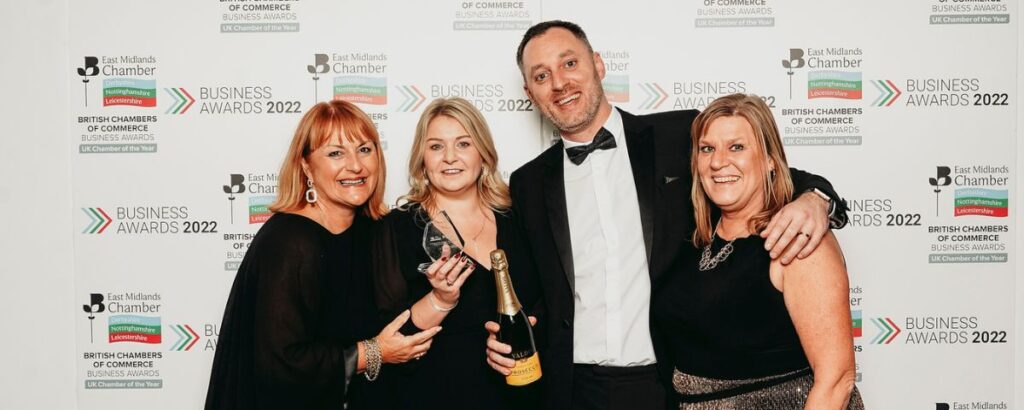
How to write a winning award entry
Winning an award is the most exciting way to gain recognition from your clients and peers; it’s the ultimate PR opportunity. But just like New Year’s resolutions, what starts out as a firm intention often falls by the wayside and before you know it, the deadline has passed and your opportunity to shine has been lost for another year. In this blog we remove some of the barriers to submitting a successful entry – and hopefully increasing your chances of industry stardom!
Before you start
Probably the most valuable piece of advice is to familiarise yourself with your chosen awards website as soon as the entry period goes live, rather than waiting until the final deadline is upon you. This allows you time for some preparation, beginning with studying the categories to establish the most appropriate for your project or nomination, and reading details of previous winners’ submissions for reassurance that your story is a viable contender.
Next, create a timeline, starting with the date of the entry deadline, and working backwards to the compilation of your pitch document and supporting materials. Graphs, tables, shortened video clips and third-party testimonials provide essential validation of your entry’s strength, but these often take longer than you’d expect to pull together, so treat that task as an early priority rather than an afterthought. And bear in mind that you may need time for your client or clients to authorise your submission if it names their company and project.
Crafting the narrative
Telling your story is the easy bit. You’re proud of your achievement and have all the confidence that the judges will be equally wowed by your prowess. Before you put fingers to keyboard, however, check the stipulated wordcount. These days, awards software will simply cut off when your uploaded submission hits the maximum permitted number of words, so you must be scrupulous in not exceeding the allocated maximum, otherwise your heroic conclusion could be left dangling mid-sentence.
Topping and tailing
For project categories you will probably be asked to outline the background, brief and objectives. There will certainly be a later section on results. Here, it’s important to ensure that your results align with the stated objectives; if you didn’t achieve your goal then your entry is unlikely to reach the shortlist. Wherever possible, include quantified results: it’s not enough to say “the client was delighted” – you need to show numerically how the endeavour reached or surpassed expectations.
A typical example could be: “The project was completed two days before deadline, delivered by a team of three fewer people than in previous years, and we were able to achieve budget savings of £5,000.”
Style and substance
Believe it or not, the quality of your writing could make the vital difference between winning and sinking without trace. It’s not enough to simply put down a series of bald statements. Your story needs to be compelling: it must impress the judges at every stage, showing how and why your creativity and/or achievement was extraordinary. There’s a huge ‘but’ coming now … be warned that judges hate, more than anything, empty boasts and exaggerated hyperbole. Keep your adjectives and exclamation marks to a minimum and avoid at all costs, the word ‘amazing’. The facts of your achievement, supported by verifiable numbers, should be presented in such a way that they speak for themselves.
The ’So what?’ test is a helpful tool here. Every time you write a statement, imagine a judge saying: “OK – but what’s so special about that?” Was it the first time the project had ever been tried? Was travel hampered by a train strike? Were you working in a Force Eight gale? Was the brief changed 24 hours before the start of the event? Was the individual being nominated hampered by any prevailing circumstances? The degree of challenge involved in your endeavour is a key indicator of extraordinary performance, so always include prevailing considerations to bolster your narrative.
Polishing the diamond
Chances are that your first draft will end up longer than the permitted wordcount, producing the twin horrors of having to pare your words right down to the bone without sacrificing key information. This will mean analysing every sentence to see where superfluous words can be removed, or if a part of the story can be rewritten more succinctly. Or if certain statements are simply reiterations of earlier content. Editing is a time-consuming task, so allow for this in your planning.
And when you think you’re ready to go, consider asking a disinterested third party to give your submission a read. As well as spotting unnoticed typographical errors, they will query statements that don’t quite add up, or they’ll press for an explanation as to why certain actions were taken in a particular way. By acting as surrogate judges, they will help you clarify your messaging and maximise the impact of your story.
Finally, you’re ready to click that ‘upload’ button. Good luck – and remember that whatever the outcome, your name and your work will have won the attention of some of your industry’s most respected individuals, and that achievement alone is worthy of congratulation!
Internal awards venues
Whilst we are on the subject of awards… many companies now hold their own internal award ceremonies to recognise and reward their employees; if you are looking for suitable venues to host award ceremonies, we’d be happy to help. Please contact our team on: enquiries@thevenuescollection.co.uk
Go back to other articles

